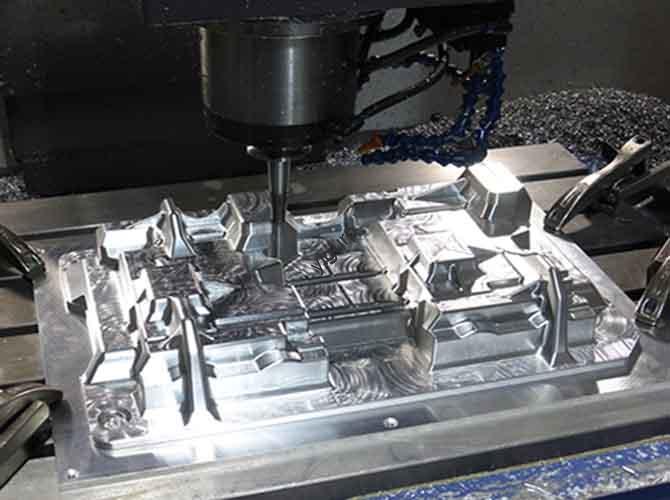Выбор правильного материала для plastic prototype molds directly impacts the mold’s durability, скорость производства, точность, и стоимость. There is no “one-size-fits-all” option—materials vary based on project needs like production quantity, часть сложности, precision requirements, и бюджет. This article breaks down the most common materials, их плюсы и минусы, варианты использования, and a step-by-step guide to select the best fit.
1. Common Materials for Plastic Prototype Molds (Сравнение таблицы)
Below is a comprehensive overview of 6 widely used materials, including their key traits and application scenarios:
| Материальная категория | Specific Types | Ключевые преимущества | Основные недостатки | Ideal Application Scenarios |
| Алюминиевый сплав | 6061, 7075 | – Легкий вес (easy to handle) – Отличная механизм (Быстрое производство) – Хорошая теплопроводность (faster cooling for parts) | – Low hardness (wears quickly) – Not suitable for high-volume production | Small/medium-sized prototypes, пробные образцы, appearance parts (НАПРИМЕР., Прототипы телефона) |
| Сталь | P20, H13, 45# Сталь | – Высокая твердость (износостойкий) – Suitable for medium/large molds – Теплостойкий (works with thermoplastics) | – Тяжелый (hard to transport/operate) – Long processing cycle – Высокая стоимость | Функциональные части, complex-structure prototypes, high-volume production molds (НАПРИМЕР., automotive component molds) |
| Бакелит (Фенольный) | Phenolic resin-based | – Бюджетный (budget-friendly) – Легко обрабатывать (fast mold making) | – Низкая сила (prone to breakage) – Плохая износостойкость – Низкая точность | Low-precision, маленькая партия, Нефункциональные прототипы (НАПРИМЕР., simple shape test parts) |
| Epoxy/Polyurethane Resin | Эпоксидная смола, полиуретан | – Быстрое прототипирование (Быстрое отверждение) – Suitable for soft molds – Low cost for small batches | – Низкая сила (not durable) – Not for high-precision or long-term use | Simple-shape prototypes, exterior parts, temporary molds (НАПРИМЕР., short-term trial production molds) |
| Copper/Beryllium Copper Alloy | Чистая медь, бериллий медь | – Отличная теплопроводность (fast part cooling) – Good precision retention | – Высокая стоимость (expensive material) – Difficult to process (needs specialized tools) | Тонкостенные детали, точные компоненты, molds requiring fast cooling (НАПРИМЕР., high-precision electronic part molds) |
| 3D печатные материалы | Photosensitive resin, нейлон | – No traditional machining needed (direct 3D printing) – Ideal for complex shapes – Fast prototyping for small batches | – Limited strength (не износостойкий) – Not suitable for high-volume production | Complex-shape prototypes, small-batch rapid molds (НАПРИМЕР., intricate medical device prototype molds) |
2. Key Factors to Consider When Selecting Materials
To avoid 选错 materials (and wasting time/money), follow this 4-step, cause-effect driven guide—each factor directly influences your material choice:
Шаг 1: Define Production Quantity
- Маленькие партии (1–50 деталей): Выбирать алюминиевый сплав, эпоксидная смола, или 3D печатные материалы (Быстрое производство, бюджетный).
- Большие партии (500+ части): Выберите сталь (износостойкий, durable enough for repeated use).
- Средние партии (50–500 деталей): Balance with алюминиевый сплав (if precision needs are moderate) или low-cost steel (if durability is critical).
Шаг 2: Assess Precision Requirements
- Высокая точность (±0.01mm or tighter): Использовать сталь (stable dimension retention) или copper/beryllium copper alloy (excellent precision for small parts).
- Moderate precision (± 0,1 мм): Алюминиевый сплав или 3D printing with photosensitive resin работает хорошо.
- Низкая точность (± 1 мм): Бакелит или эпоксидная смола is sufficient (budget-friendly).
Шаг 3: Evaluate Budget Constraints
- Низкий бюджет: Расставить приоритеты bakelite, эпоксидная смола, или entry-level 3D printing materials (nylon/PLA-based).
- Medium budget: Алюминиевый сплав (balances cost and performance) лучший выбор.
- Высокий бюджет: Инвестировать в сталь (для долговечности) или beryllium copper alloy (for high precision and cooling speed).
Шаг 4: Analyze Part Complexity
- Сложные формы (НАПРИМЕР., internal hollows, мелкие детали): 3D печатные материалы (no need for traditional machining) или алюминиевый сплав (easy to mill complex features).
- Простые формы (НАПРИМЕР., плоские панели, basic frames): Бакелит, эпоксидная смола, или low-cost steel (fast processing, no extra complexity).
3. Перспектива Yigu Technology
В Yigu Technology, we believe plastic prototype mold material selection is a “balance of needs” rather than chasing a single “best material.” For most clients—especially startups and small businesses—алюминиевый сплав (6061) is the most versatile choice: it’s fast to machine, рентабельный, and precise enough for 80% of prototype needs. Для высоких проектов (НАПРИМЕР., Прототипы медицинского устройства), Мы рекомендуем beryllium copper alloy for its cooling speed and precision retention. For budget-limited, simple tests, 3D printed photosensitive resin molds cut lead time by 50% compared to traditional materials. Наш совет: Start by listing your top 2 priorities (НАПРИМЕР., “speed + low cost” or “precision + durability”)—this narrows down materials in minutes.
4. Часто задаваемые вопросы (Часто задаваемые вопросы)
- Q.: Can I use 3D printing materials for plastic prototype molds that need to produce 100 части?
А: Это зависит от материала. Photosensitive resin molds are only suitable for 10–20 parts (low wear resistance), но nylon-based 3D printing materials can handle 50–80 parts. Для 100 части, Мы рекомендуем алюминиевый сплав (more durable and cost-effective).
- Q.: Is steel always better than aluminum alloy for plastic prototype molds?
А: Нет. Steel is better for high-volume, high-wear scenarios, but aluminum alloy is superior for small batches: it’s 3x faster to machine, 1/3 the weight, и 50% дешевле. Choose steel only if you need 500+ parts or extreme durability.
- Q.: Why is beryllium copper alloy used for thin-walled plastic parts?
А: Его Отличная теплопроводность (2x higher than aluminum) ensures thin-walled parts cool quickly and evenly, reducing warping or deformation. This is critical for thin parts (НАПРИМЕР., 0.5mm thick electronic casings) where shape accuracy is key.
